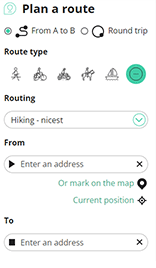Copyright: All rights reserved
Because of the persecution after the Treaty of Münster in 1648 (end of the 80-year war), the Catholics from Valkenswaard and Schaft had built a border chapel in State Brabant. This chapel or emergency presbytery offered them a place to stay in which to practice Catholic worship. After all, this was forbidden in the Northern Netherlands.
The chapel was bought in 1686 by Peeter Wijnants van Enneten, son of the future mayor of Eindhoven. He founded a "hermitage" or hermitage, a small monastic community. Eremites went to live there in solitude to experience their Christianity more deeply. They called themselves "Brothers of Honour of the Congregation of St. Joseph in the Achelse heath". This remitage is the origin of De Achelse Kluis. The first hermitage was built at the beginning of the 18th century. The wastelands were cultivated on both sides of the border. A laundry bleaching factory was operated and care was given to the mentally retarded. Education was also provided for residents of the area.
The French Revolution marked the end for the time being. In 1798 the monks were forced to sell their monastery, with outbuildings and land for Hfl 6,000. In the end, they had to leave on their own. The buildings were leased by the new owner and fell into disrepair.
It was Josephus-Maria van Moock, prior of the monastery estate in Meersel (B), who had his eye on what was left of De Achelse Kluis, because further expansion in Meersel was impossible. Near De Kluis, 95 ha. land offered for sale by Baroness dowager Van Tuijl van Serooskerken of Heeze and Leende and of Zes Gehuchten, who resided at the castle of Heeze. Van Moock found support in "den Hoog Eerweerden Vader Abbot" of Westmalle (B). On 9-4-1845 2 deeds of sale were signed, one for the Dutch and one for the Belgian part. The purchase price was Hfl. 20,250. This amount was donated by the Flemish benefactor, Madame de Villegas de Clercamp, at an interest rate of 4% during her lifetime, and with the promise that after her death twenty-four masses would be said annually for her salvation. ??? The buildings were bought from the Gebr. Herema ????
On 19-8-1845 the territory was expanded with "the heath below Achel", about 13 hectares in size. On March 9, 1846, the monks moved from Meersel to Achel began. An orchard was planted in 1847. In 1848 another piece of heathland was purchased. Van Moock ruled the monastery until his death in 1868. The lands and buildings had been named after him when they were purchased, and since then the lands have passed from abbot to abbot (which was of course risky, as it was the property of an entire monastic community).
In the 2nd half of the 19th century, many economic activities took place in the abbey. There were, among other things, a washhouse, shoe and saddle shop, bindery, printing house, photo studio, wheelwright, blacksmith's shop, coppersmith's shop (including for religious objects), bakery and carpentry workshop and fire hoses were made for the wider area. Once upon a time there was also a steam engine, which set the millstones and a churning machine in motion. Cheese was also made and they also had 60 head of cattle. There was also a thuja nursery, not only for the monastery hedges, but also for sale in the wider area. After Rome elevated the Achel priory to the status of an abbey in 1871, its impact on the surrounding area increased even more.
There was already a malt house and beer brewery from 1850: the Achelse beer was known as "the father's keg" and was highly praised. The brewery stopped in the 1st World War when the Germans removed the copper brewing kettles and pumps in 1917. It was not until the beginning of 1999 that the brewery would be restarted.
There was also viticulture. Since the bountiful harvests of 1865 and 1868, Achel enjoyed a good reputation as a wine producer and their mass wine was in great demand. Due to the increasingly ungenerous grape harvests, viticulture was stopped around 1910.
During the 1st World War, the Germans forced their way into the abbey with 2000 men and emptied the wine and beer cellar: the road to Achel was littered with empty bottles.
Between the 2 world wars, many chickens, pigs and horned cattle were kept. They also made matt sheet for the court jester factories of the Bazelmans family, who had financial interests in the monastery.
![]() | | Public | Dutch
| | Public | Dutch
Discover the most beautiful and popular trails in the area, carefully bundled into appropriate selections.
Copyright: All rights reserved
Discover the most beautiful and popular attractions in the area, carefully bundled in appropriate selections.
Copyright: All rights reserved
With RouteYou, it's easy to create your own customised maps. Simply plot your route, add waypoints or nodes, add places of interest and places to eat and drink, and then easily share it with your family and friends.
Route planner

<iframe src="https://plugin.routeyou.com/poiviewer/free/?language=en&params.poi.id=4597616" width="100%" height="600" frameborder="0" allowfullscreen></iframe>
Try this feature for free with a RouteYou Plus trial subscription.
If you already have such an account, then log in now.
© 2006-2024 RouteYou - www.routeyou.com